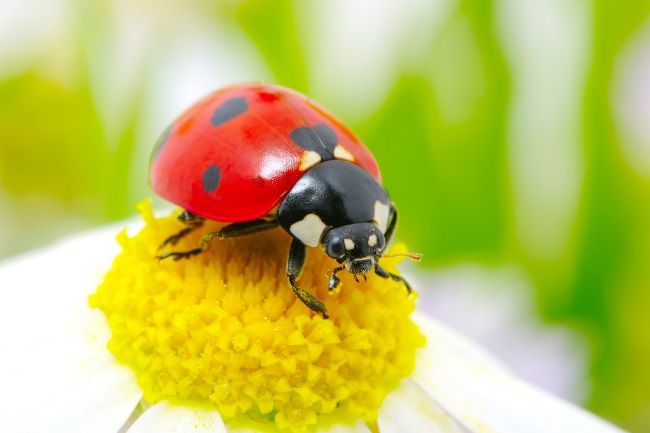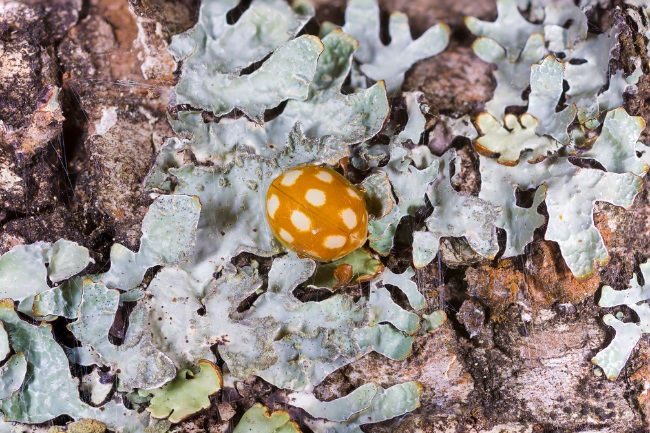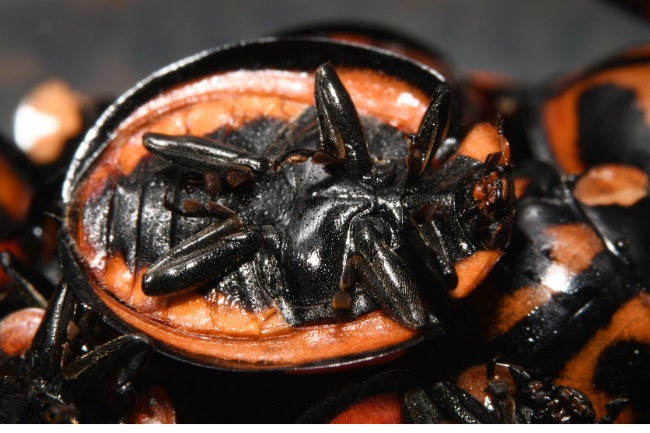A tiny ladybug may appear completely defenceless against its much larger predators, such as birds and rodents, yet luckily they do have a few tricks up their sleeves. From bright warning colours to a hard outer shell, even to the ability to play dead, these little insects give it their all to stay ahead of the game.
Contents
A natural armour

Like all insects, ladybugs have an exoskeleton. This is a hardened outer skin layer that protects their soft innards. However, on top of this, ladybugs, like most beetles, also have rigid outer wings that act like a shield, protecting a second more delicate set of wings from damage.
| Defense Mechanism | Description |
|---|---|
| Warning Coloration | Ladybugs have bright and contrasting colors, such as red, orange, and black, which serve as warning signals to potential predators. The colors warn predators that they are toxic or distasteful. |
| Reflex Bleeding | Ladybugs have a unique defense mechanism called reflex bleeding. When threatened, they can release a foul-smelling and toxic liquid from their leg joints, deterring predators from attacking them. |
| Tucking Legs and Wings | Ladybugs can tuck their legs and fold their wings tightly against their bodies, making it harder for predators to grab and harm them. This posture also protects their delicate wings from damage. |
| Playing Dead | In response to a threat, ladybugs may play dead by remaining motionless and tucking their legs and antennae. This behavior can deceive predators into thinking they are no longer a threat. |
| Faking Death | Ladybugs can exhibit thanatosis, also known as “playing possum.” They drop to the ground and remain motionless, resembling a dead insect. This tactic can discourage predators from attacking. |
While all this might not be enough to save them from a sharp set of teeth, it can protect them from attacks from other insects, or from near misses from larger predators, as well as the dangers of the natural environment around them.
Also read: What Does a Ladybug Bite Look Like? (Treatment)
Bright colours
We have long marvelled at the ability of animals to camouflage themselves against their backgrounds, from leaf-like moths to stick-like reptiles. Yet, not all creatures want to hide away.
Many animals use bright colours to warn others of their toxic nature. This is called aposematic colouration. From brilliant red poison dart frogs to yellow sea snakes, these bright colours and striking patterns tell potential predators that their afternoon snack may turn out to be the last they ever have.
Most ladybugs use precisely this strategy, often displaying bright red, yellow or orange colours. The contrast between these primary colours and bold black patterning is another warning signal. We see this commonly in species like wasps and snakes. We may find the ladybugs red wings with black spots adorable, but in the animal kingdom, this clearly states; keep back or else!

Yet, not all who dress boldly have the goods to back it up. Some animals merely borrow their scary colours from others without the toxins inside to follow through with the threat. For example, hoverflies carry the black and yellow stripes of wasps without the dangerous sting to offer as a defence.
Ladybugs, however, are the real deal, capable of making any adventurous bird regret their curiosity. One snap at a ladybug may not be the end of their flapping days. Still, it will certainly stop them from trying a tasty looking red and black bug next time. So while these warning colours won’t save every single ladybug from becoming breakfast, one bad mouthful should be enough to keep their siblings off the menu.
Ladybug larvae are often less bright, though many do still have colourful patches. The larvae are often mostly black or grey, with the occasional flash of yellow or orange. They rely more on going unnoticed, nestled into the shade of the vegetation. But if they are spotted, many have a spiky texture to their exoskeleton, which makes them appear unpleasant or dangerous to eat.
Also read: How do Ladybugs Reproduce? (From Egg, Larvae to Pupa)
Foul liquids
Ladybugs practice something called reflexive bleeding. This is where they release some of their blood through their knees. This blood is known as hemolymph and is yellow. Many people mistake it for the ladybug relieving itself, but it’s simply trying to scare you away.
The hemolymph contains those nasty toxins that make the ladybug unappetising, meaning that if a predator decides to gobble one up, they’ll get a taste of the bitter liquid and spit it back out. This act aims to deter predators before they attempt to sample the little beetle or to force them to regurgitate the ladybug without having taken a bite.
Hiding away
While our most famous ladybugs practice scare tactics, some species go for good old fashioned camouflage. The larch ladybug, for example, looks rather dull compared to the favourite seven-spot ladybug, yet its brown colour hides it perfectly against the bark of the pine tree.
As well as colouring themselves to fade into the background, ladybugs also physically hide away. Ladybugs generally tuck themselves away when they are inactive, such as when temperatures are too low for them to function. This is usually at night and in winter. Not only does hiding away protect them from the elements, but it also keeps them out of the way of hungry mouths.
Ladybug, ladybug fly away home
It may seem obvious, but a ladybug’s ability to fly is one of their best defence mechanisms. If threatened, they can simply take off into the air and find somewhere else to hang out. Of course, this strategy doesn’t always work out well with aerial predators, as a bird can fly faster than most little insects. But with ground-dwelling foes, it can work out rather well.
| Predator | Description |
|---|---|
| Birds | Birds, such as sparrows, finches, and swallows, are known predators of ladybugs and can consume them when they come across these brightly colored insects. |
| Spiders | Some spider species, including orb-weavers and crab spiders, may capture ladybugs in their webs or ambush them as they crawl on vegetation. |
| Wasps and Hornets | Certain wasp and hornet species prey on ladybugs, capturing them as a food source for their larvae. |
| Praying Mantises | Praying mantises are known to be formidable predators and can capture and consume ladybugs if they get within striking distance. |
| Ants | Certain ant species, particularly those that are aggressive and have a strong hunting instinct, may attack and prey upon ladybugs. |
Do ladybugs play dead?

Like many animals, ladybugs have a backup plan that goes beyond fight or flight. Though it may seem risky when faced with an enemy many times your size, playing dead can be a most effective method of dissuading a hungry predator. Many animals simply aren’t programmed to eat food that’s not moving, their instincts often kicking in when their prey tries to escape.
For us, a dead ladybug, a sleeping ladybug and a ladybug simply playing dead, can all look the same. The little insect stops still and pulls its legs in. Sometimes it might even be upside down. The only way to see if it was faking it is to wait around and see if it starts moving again when it thinks the coast is clear. Keep in mind that over winter it may be in diapause, where it won’t move for long periods, and at night it will be sleeping.
Mighty but small
Like most insects, ladybugs are very close to the bottom of the food chain. This means that almost anyone could be looking at them as a potential snack. Yet, these little beetles got lucky in the evolutionary arms race, their bright colours and toxic innards protecting them from a great deal of hungry animals. Yet, it’s still not over. Who knows what else ladybugs might have to come up with in the future to keep themselves off the dinner menu.

